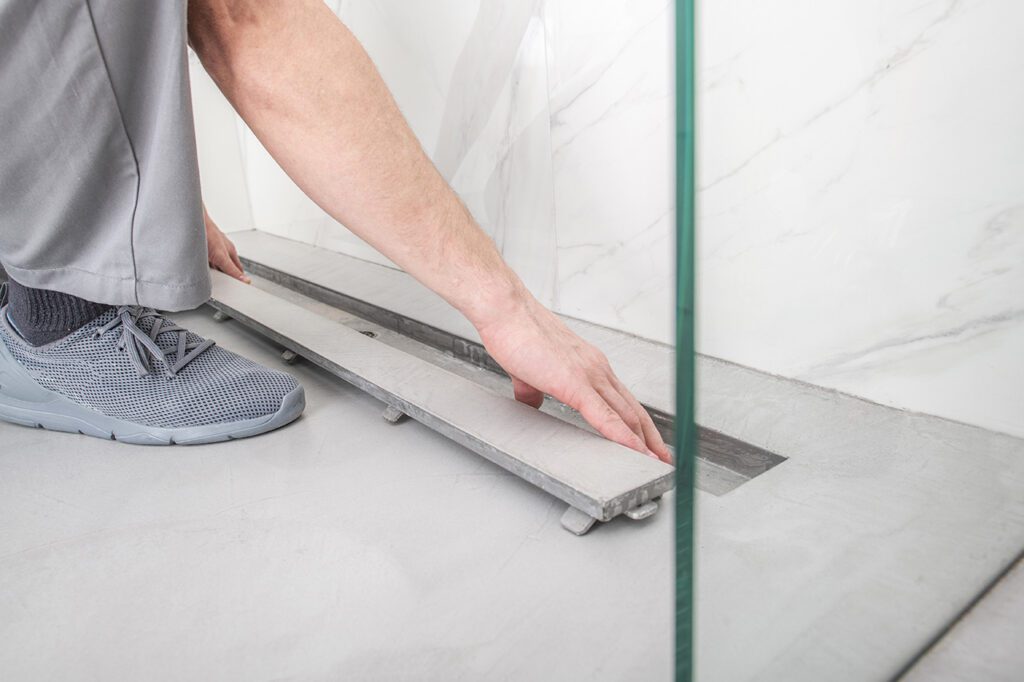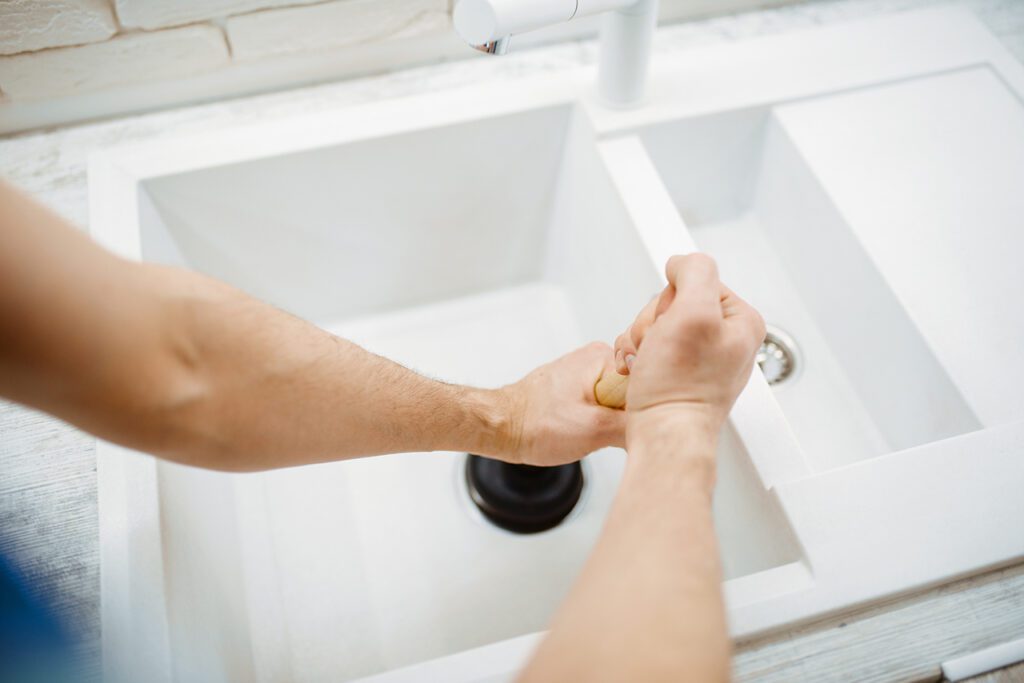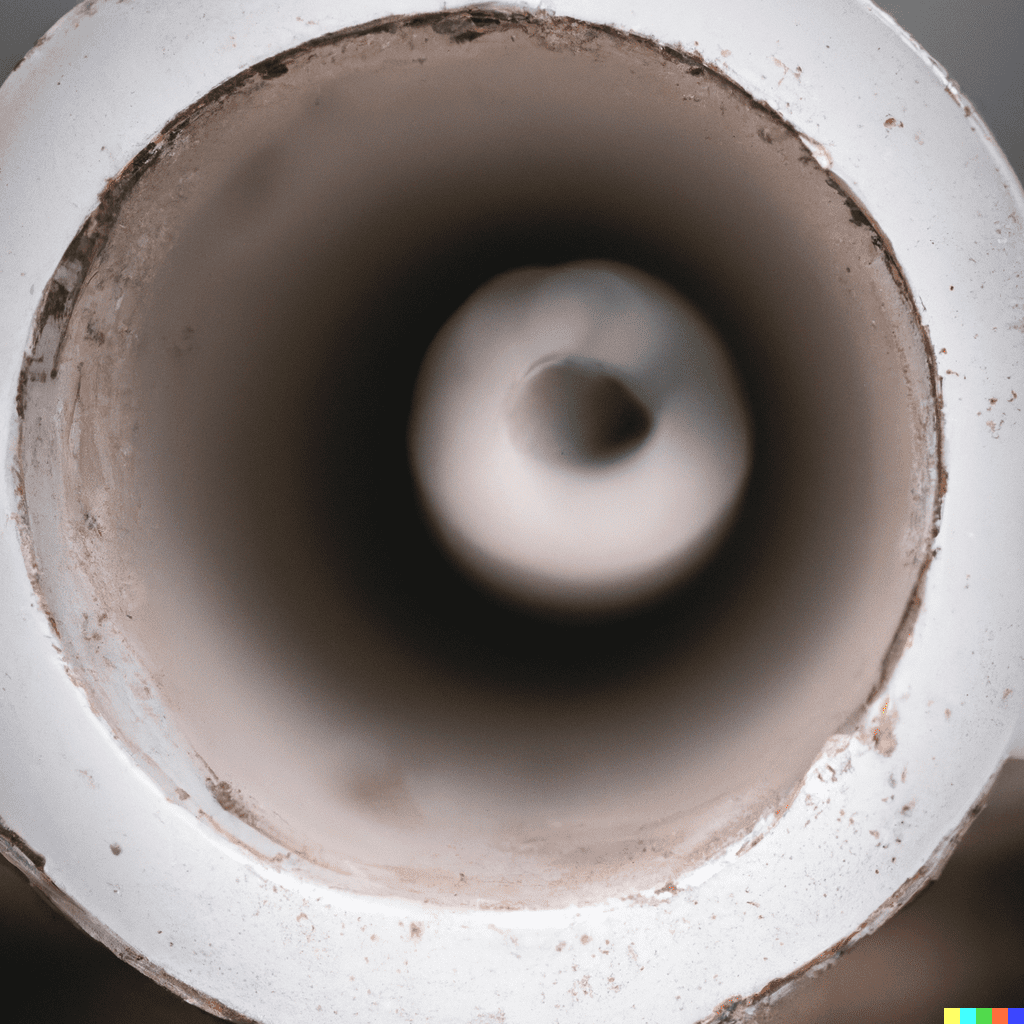Are you frustrated with a clogged shower drain? It’s an annoying and potentially messy problem that can be difficult to fix. But don’t worry, I’m here to help! In this article, I’ll provide step-by-step instructions on how to unclog your shower drain quickly and easily.
Whether it’s caused by hair buildup or soap scum, having a clogged shower drain is always inconvenient. Not only is it unpleasant when the water won’t go down while you’re taking a shower, but standing in several inches of murky water isn’t very enjoyable either. Luckily, there are some simple solutions for unclogging your shower drain without having to call a plumber.
With my advice and clear guidance, you’ll have your drain back up and running in no time at all. So if you’ve been dealing with a stubbornly clogged drain lately, then keep reading – because before long you’ll be able to enjoy fast draining showers once again!
What Causes A Clogged Shower Drain?
Have you ever taken a shower only to find that the water is pooling around your feet and not draining properly? It’s an awful feeling, and it could be due to a clogged drain. So how can you tell if this is the case? Let’s take a look at what causes a blocked shower drain, as well as some tips on identifying one.
Clogs in showers are usually caused by hair or soap scum buildup along the walls of the pipe. This accumulation gradually builds up over time until there’s so much debris blocking off the passage that no more water can get through. In addition, items like toys, jewelry and even small pieces of plastic can sometimes get washed down and cause problems further down in the drainage system.
The good news is that these sorts of blockages tend to be fairly easy to identify – all you need is something like baking soda plus vinegar (or just baking soda), some hot water and perhaps a drain snake for stubborn clogs. You’ll also want to make sure that any drain covers are securely in place; these will help stop larger items from getting through in future should they accidentally slip past while bathing! Finally, using store-bought drain cleaners every now and then can go a long way towards preventing serious clogs from forming in the first place.
How To Identify A Clogged Shower Drain?
Have you ever gone to take a shower, only for the water to slowly stop draining away? If so, there’s a good chance that your drain may be clogged. Identifying this can seem daunting at first but with some simple steps and supplies, it doesn’t have to be! Here’s how to tell if your shower drain is blocked.
First off, check out any visible blockages like hair or soap scum buildup around the pipe walls. It might not look too bad at first glance, but these things accumulate over time until they create enough of an obstruction that no more water can get through. In addition, items such as jewelry, toys and small pieces of plastic are often washed down drains and can cause further problems in the drainage system.
To make sure everything is clear, there are several methods you can use:
- Mix baking soda plus vinegar (or just baking soda) into boiling hot water and pour it down the drain – this should loosen up most minor blockages;
- Use a wire coat hanger bent into a hook shape to fish out any larger objects;
- Flush white vinegar down the drain once every few weeks – this helps keep future clogs from forming.
Once all these measures have been taken care of, you’ll know whether or not you’ve successfully identified a clog in your shower drain!
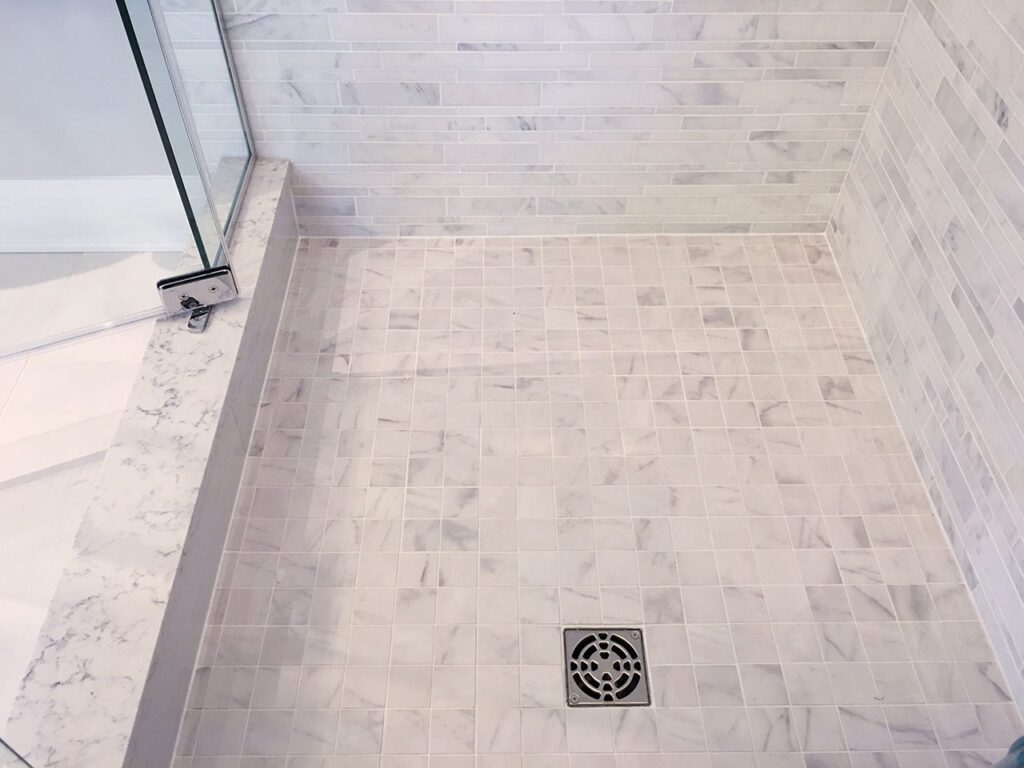
DIY Solutions For Unclogging Your Shower Drain
Unclogging your shower drain can be a tricky task, but with some basic DIY knowledge it doesn’t have to be! Here are a few ways you can unclog your shower drain without calling in the professionals.
First of all, remove the drain cover and take a look at what’s causing the blockage. If there is visible debris blocking the pipe walls or small objects like jewelry that may have been washed down during previous showers, use a wire hanger bent into a hook shape to fish them out.
Next, try using a plunger to loosen up any minor clogs. Make sure you fill up enough water in the tub so that the plunger stays firmly placed on top of the drainage hole while working it around vigorously until everything loosens up and flows away freely.
Finally, if none of these methods work then it might be time to give baking soda and vinegar method a try. Pour ½ cup of baking soda followed by 1 cup of white vinegar (or boiling hot water) down the drain – this should help break apart most major blockages within minutes for easy removal.
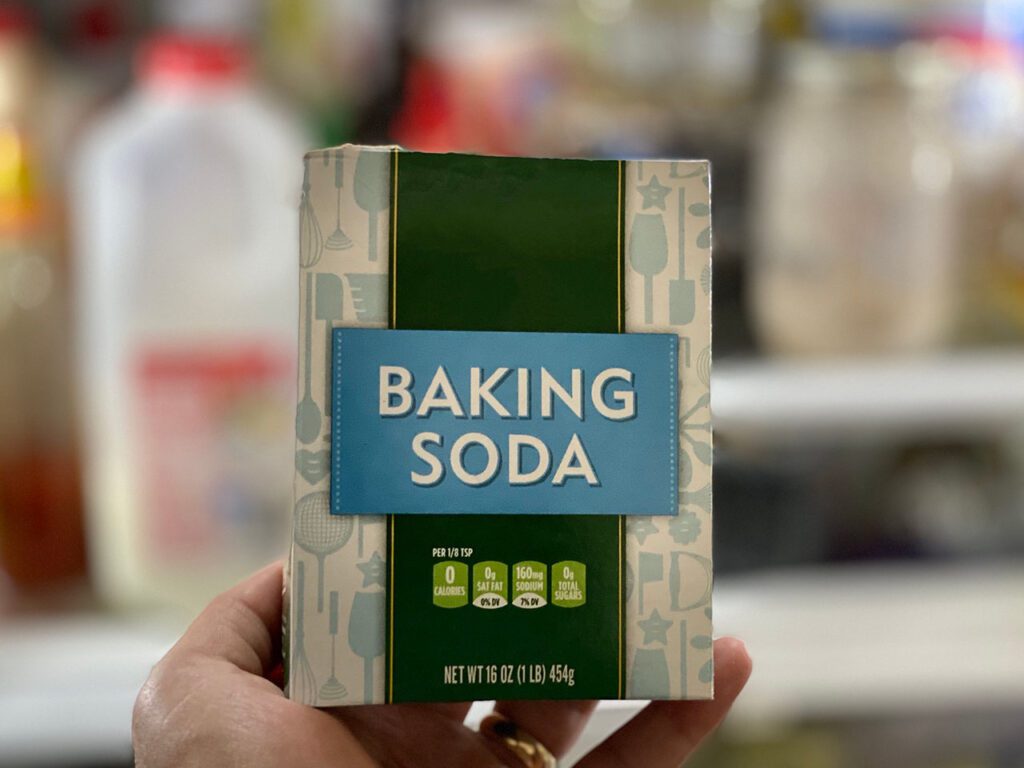
Baking Soda And Vinegar Method
When it comes to unclogging your shower drain, the baking soda and vinegar method is one of the most popular DIY solutions. It’s simple, cost-effective, and can be done in a few easy steps. Here’s how you can use this method to get rid of any stubborn clogs:
1) Start by pouring ½ cup of baking soda down the drain followed by 1 cup of distilled white vinegar. The mixture will start to foam up as it works to break apart whatever is blocking the pipe walls.
2) Once all the foaming has subsided, let it sit for at least 30 minutes so that it can do its job properly without being washed away too quickly. Afterwards, flush everything out with hot water while keeping an eye on the drainage hole to make sure nothing further gets lodged inside.
3) Lastly, if there is still some residue stuck within the pipes then take a rag or cloth and carefully place it over the drain stopper before filling up a bucket with boiling water and slowly pour it into the tub until everything loosens up and flows freely again. This should help remove any remaining debris causing blockages in no time!
With these easy steps, you’ll have your shower drain unclogged and flowing like new in no time!
Boiling Water Method
If the baking soda and vinegar method didn’t help to unclog your shower drain, then it might be time for a more drastic approach: boiling water. This is one of the most effective ways to get rid of stubborn clogs and can work wonders if done correctly. Here’s how you can use hot water to clean a shower drain in three easy steps:
First, pour two quarts (or liters) of boiling or near-boiling water down the drain while simultaneously flushing it with cold water from outside the tub. The combination will create pressure that should be enough to break apart any materials blocking up your pipes without damaging them. If this doesn’t do the trick, try adding some dish soap into the mix as well to give it an extra boost.
Second, wait about 15 minutes before trying again with another pot of boiling water. This should give enough time for whatever was stuck within your pipes to start breaking apart and eventually flush out with the help of gravity and suction created by running hot water through it continuously until it’s completely clear.
Finally, after everything has been flushed out properly, make sure that you rinse off any remaining residue on both sides of the tub using warm soapy water before putting everything back together – this will ensure that nothing gets lodged inside again! With these simple steps, you’ll have successfully cleared away any blockages from your shower drain in no time at all!
Plunger Method
If boiling water didn’t do the trick and you’re still struggling to unclog your shower drain, fear not – there are a few other methods that can help get rid of whatever is blocking up your pipes! The plunger method is one option that may just save the day. Here’s how it works:
1) Start by putting the drain stopper in place and running the shower for at least 20 seconds to fill up the tub with some water. This helps create enough pressure so when you start plunging, it should be more effective at breaking apart any clogs.
2) Next grab a rubber or plastic plunger and make sure that it fits snugly over the top of your drain before starting to plunge vigorously (about 10-15 times). If done correctly, this should cause enough suction to break down whatever is causing your clogged drain issue.
3) Finally, if after several tries plunging doesn’t seem to work, then consider using a drain snake or an auger cable as these tools will usually be able to reach further into the pipe and break apart anything obstructing its flow. Once again, try flushing out with hot water afterwards to ensure all debris has been cleared away from your shower drain.
With just a bit of effort and patience, any stubborn blockage within your pipes should soon be gone and you’ll find yourself once again enjoying clear flowing showers!
Drain Snake Method
If the plunger method didn’t do the trick, you may want to try using a snake or auger tool. This specialized equipment is designed specifically for removing clogs from drains and can be quite effective if used properly. Here are four steps that will help walk you through this process:
1) Start by unscrewing the drain cover with a screwdriver in order to gain access to the opening of your shower drain. Be careful not to lose any pieces as you go along!
2) Once you have removed the stopper, insert a drain snake into the opening and push it down as far as possible until it hits something solid like a blockage or pipe wall. Then twist the handle clockwise several times before slowly pulling back out again.
3) If anything was dislodged during this process, carefully look down into the drain opening and make sure that everything has been cleared away completely. If there’s still some debris left behind, repeat step two until all obstructions have been eliminated.
4) Finally, reassemble your drain stopper using whatever hardware came off when taking it apart earlier on – just ensure that everything is securely fastened together before testing out whether or not your efforts were successful!
With these simple instructions in hand, unclogging even persistent shower drains should no longer be such an arduous task!
Chemical Drain Cleaners For Unclogging Your Shower Drain
If you’re still having trouble removing a stubborn clog from your shower drain, it may be time to try using chemical drain cleaners. These products are specifically designed to dissolve soap scum and other debris that could be blocking your drain pipes. Before attempting this method, however, make sure that the product is suitable for use in showers – some commercial drain cleaners can damage plastic or metal plumbing fixtures over time if used improperly.
Here’s a three-step guide on how to unclog your shower drain using these chemical solutions:
1) Start by pouring about one cup of baking soda down the affected area before following up with an equal amount of white vinegar. Allow the mixture to sit for at least fifteen minutes before flushing out with boiling water. This will help break apart any elements that might be causing blockage in the pipes.
2) After waiting a few hours, pour down half a cup of salt followed by two cups of hot water into the drainage system and wait again for around 15 minutes. The salt should act as an abrasive agent which helps loosen hard deposits like hair or grease buildup in order to flush them through more easily.
3) Finally, if all else fails, consider investing in specialised chemical drain cleaners available from hardware stores. Simply pour the recommended amount into the blocked section and allow it to work its magic overnight before washing away any residue left behind in the morning!
By combining both mechanical and chemical methods together, most homeowners should be able to effectively remove even persistent clogs from their shower drains without too much hassle – but when do you know it’s time to call the plumber?
When To Call The Plumber?
When it comes to unclogging your shower drain, there’s no shame in asking for help. Sure, you may have tried all the DIY methods out there but sometimes a stubborn clog just won’t budge. If that happens, don’t be afraid to call a plumber – they can assess the situation and advise on whether or not replacing the entire drain is necessary.
If you decide to go ahead with calling a professional, make sure that all chemical products are flushed down the drain before the technician arrives so as not to cause any damage during their work. Additionally, remember to pour boiling water down the sink at least once every two weeks (or more often if needed) in order to prevent future blockages from forming.
Before calling a plumber though, double-check your handywork by plunging or snaking the drain yourself one last time – use a flashlight if necessary! If this doesn’t do anything then it’s probably time to give an experienced expert a ring. Don’t worry about having wasted your time attempting other methods first; most plumbing companies will understand what you’ve been through and come up with an appropriate solution for whatever issue may be present in your drainage system.
At times like these, it pays off to trust a professional who knows exactly how best to deal with any kind of clogged drains – especially ones located in showers where moisture levels tend to be higher than usual! So next time something goes wrong with your shower drain, don’t hesitate when considering whether or not you should call the plumber – chances are they’ll know exactly what needs doing!
Tips For Preventing Future Clogs Of Your Shower Drain
Unclogging a shower drain can be a tricky process and often requires the help of an expert. But with some simple steps, you can easily prevent future clogs from occurring in your shower! Here are five easy tips to keep your shower drain running smoothly:
• Clean your shower drain regularly with a plastic drain cleaner or an old toothbrush. Doing this every few weeks ensures that any debris is cleared away before it has a chance to build up and cause blockage.
• When filling the tub or shower, make sure that the water level doesn’t exceed more than two inches above the height of the drainage pipe – otherwise, water may overflow and cause a backup.
• Be on the lookout for large clumps of hair when cleaning out your shower drains as these can quickly lead to nasty blockages. Use tweezers or a pair of pliers if necessary to remove them completely.
• Install a drain screen over each opening in order to catch soap scum and other small pieces of debris which could eventually lead to backups if left unchecked. Make sure that you clean off these screens at least once per month so they don’t become blocked themselves!
• Lastly, pour boiling hot water down your sink every two weeks (or more often) in order to help dissolve grease and flush out any potential buildup which might be causing issues further down the line.
By following these tips consistently, you should find that unclogging your shower drain becomes less frequent – allowing you time to enjoy using it without worrying about what might go wrong next!
Common Mistakes When Attempting To Unclog Your Shower Drain
Unclogging your shower drain can be tricky, but it’s not impossible. Unfortunately, some people make mistakes when attempting to do so that only end up making the problem worse. To help you avoid these common pitfalls and get your drains back in working order, here are a few things you should know.
First of all, standing water is one of the main causes of clogs in showers and bathtubs – so if you notice any pooling at the bottom while taking a shower or bath then this could be an indication that there’s something blocking the way down below. If this is the case, then you’ll need a drain snake or plunger to try and remove whatever’s causing the clog before repeating the process with hot water and chemical cleaners.
Another mistake many homeowners make when dealing with blocked shower drains is ignoring how much hair accumulates over time during baths and showers – because if too much builds up inside pipes then even plungers won’t work! To prevent this from happening, it’s best to use a strainer or screen on top of each drain in both your bathtub and shower every couple of months for easy cleaning purposes.
Finally, one of the best ways to keep your drainage system functioning properly is by regularly inspecting them for any obstructions caused by debris buildup or corrosion from chemicals used around the house. If anything suspicious pops up during your inspection, then call in professional plumbing services immediately as they will be able to identify exactly what needs fixing and take care of it quickly without damaging other parts of your home’s plumbing system.
Troubleshooting issues with your drains can sometimes seem daunting – especially when trying to figure out why they’re suddenly backed up – but armed with knowledge about common mistakes as well as strategies for keeping them clear in the long-term, anyone can unclog their own shower drain like an expert!
Q: Is there anything I can do before calling a plumber?
A: Absolutely! Before reaching out for professional assistance, try using a plunger on both ends of the drainpipe – this should hopefully dislodge whatever obstacle is causing the issue. If not then you could also use chemical cleaners available at most hardware stores as another option for clearing away debris.
Frequently Asked Questions
Having a clogged shower drain can be annoying and inconvenient, but it doesn’t have to ruin your day. With the right approach and help from professionals, you’ll soon find yourself back in business with an unclogged shower! Here are some frequently asked questions about how to go about unblocking drains that might help clear up any confusion:
What causes clogs in the first place?
Usually it’s due to excess hair or soap scum buildup over time – this is why installing catch nets or sink strainers near each drain can really help prevent blockages. Other culprits may include too much toilet paper being flushed down the bathtub at once, or hard objects like toys that get stuck in the pipe.
Is There Anything I Can Do Before Calling A Plumber?
Absolutely! Before reaching out for professional assistance, try using a plunger on both ends of the drainpipe – this should hopefully dislodge whatever obstacle is causing the issue. If not then you could also use chemical cleaners available at most hardware stores as another option for clearing away debris.
Whatever route you decide take, make sure that safety always comes first throughout the process by wearing protective gear such as gloves and goggles when necessary. Taking these precautions will ensure that you’re able to successfully tackle any blocked pipes without having to worry about getting hurt along the way!
What Is The Best Way To Prevent Future Clogs?
In life, it’s common to come across obstacles that can block our path. Much like clogged drains in a shower, they can be tricky and annoying to unclog – but preventative measures are always possible. So what is the best way to avoid future clogs?
Let me tell you an allegory: A wise man once said “An ounce of prevention is worth a pound of cure”. This means that taking proactive steps before something goes wrong will save you from much greater work later on. With this in mind, here are five ways to protect yourself against drain-related problems:
1) Use strainers or covers over your drains – these help catch hair and other debris which would otherwise accumulate in the pipes;
2) Pour boiling water down the drain at least once every month as this helps dislodge any substances stuck inside;
3) Clean out the P-trap periodically to remove any sediment buildup;
4) Avoid pouring grease, oil, coffee grounds or food scraps into the sink;
5) Invest in quality plumbing fixtures that won’t corrode easily with time.
By implementing these simple strategies now, you’ll be better prepared for whatever comes next – whether it’s simply avoiding annoyance or more serious plumbing issues! Taking action today will result in fewer headaches tomorrow – and who wouldn’t want that?
How Often Should I Check For Clogs?
It’s easy to forget about your shower drain until it becomes a huge problem. But if you’re wondering how often you should be checking for clogs, the answer is: regularly! Clogs can form over time and regular checks will help prevent them from becoming bigger issues.
Start by taking a look down there once every few weeks or so. You’ll want to make sure nothing has gotten stuck in the drain that could potentially cause problems later on. Seeing any buildup of hair, soap scum, dirt, or other debris? Clear those out as soon as possible before they turn into something more serious.
You may also want to consider using certain products such as chemical cleaners or natural enzymes to keep things flowing freely. These products are designed to break up any grime or grease that might have built up over time and help reduce the chances of clogging in the future. Plus, they’re usually not too expensive either. So why wait until your shower drain is completely blocked off when you can take preventive measures now?
Is It Safe To Use A Chemical Drain Cleaner?
When it comes to unclogging our drains, we all want a hassle-free solution. But are chemical drain cleaners the answer? According to research by Conserve Water Partnerships, over 45% of households use them at least once per year.
Chemical drain cleaners can work well when used correctly, but they also come with risks – and these should be considered before taking action. The chemicals in many commercial products contain hazardous ingredients that can damage pipes and harm your health if not handled properly. Chlorine bleach is particularly dangerous as it produces toxic fumes which can cause skin burns or respiratory problems. And even though some people swear by baking soda and vinegar for clogs, this mixture isn’t always effective and can result in more blockages than it solves!
If you’re looking for an alternative to chemical drain cleaners then there are plenty of options available. Plungers, rods, snakes and manual augers are great tools for dislodging blockages without the need for harsh chemicals. They require a bit more effort on your part but will get the job done safely and effectively – plus you won’t have to worry about any nasty side effects from using harmful substances around your home!
How Much Does It Cost To Hire A Plumber?
Have you ever had a clogged shower drain and wondered how much it would cost to hire a plumber? It can be quite intimidating, as plumbing services usually come with hefty price tags. But if you’re facing an issue that needs professional attention, don’t worry – there are ways for you to save money while hiring the best help available.
The cost of hiring a plumber will depend on several factors, such as the type of service needed and your location. For example, in some areas, rates may vary depending on whether or not the job requires specialized tools or expertise. Additionally, emergency calls tend to be more expensive than routine visits due to their urgency.
To save money when calling for plumbing assistance, try doing simple fixes yourself first. This includes checking if something is blocking the pipe or using a plunger to see if it helps unclog the drain. If these methods fail, then it’s time to consider calling in reinforcements! When selecting a plumber, make sure they have experience dealing with similar issues and check reviews from previous customers before making any commitments.
Knowing what kind of problem you’re facing ahead of time will also help keep costs down by allowing you to research solutions online or speak with knowledgeable professionals who can give advice without charging for it upfront. Ultimately, being proactive about your plumbing problems can help ease financial stress and ensure that your home remains safe and functioning properly.
What Is The Most Effective Solution For A Clogged Shower Drain?
Solving a clogged shower drain is an issue that many homeowners have to grapple with. Fortunately, there are effective solutions out there for unclogging your shower without the need of expensive plumbers or harsh chemicals. The most important thing to do when trying to solve this problem is figure out what exactly is causing it.
In general, hair and other debris can easily get stuck in the pipes of your shower and cause them to become clogged. It’s best to start by removing any visible objects from the drain before attempting more drastic measures. If you don’t see anything blocking the pipe, then you’ll likely need to use some kind of chemical solution like vinegar or baking soda mixed with hot water. This should help dissolve any oils or soap scum that may be contributing to the blockage.
If these methods don’t work, then you might want to think about using a plunger or snake tool designed specifically for unclogging drains. These tools are relatively inexpensive, and they can often quickly break up whatever material has come loose inside the drainpipe and restore proper drainage flow again.
Regardless of which method you choose, just remember that patience and persistence will pay off in the end! With a bit of elbow grease, you’ll soon be able to go back enjoying those hot showers without worrying about pesky clogs getting in the way anymore!
Conclusion
The shower drain can be a major source of frustration when it clogs up. We’ve gone over the best ways to prevent future clogs, how often you need to check for them, and the safety considerations when using chemical cleaners. Now let’s talk about what is possibly the most effective way to unclog your shower drain–using a plunger!
Using a plunger is simple: all you have to do is make sure there’s enough water in the drain so that your suction will work effectively. Then insert the cup around the stopper and start pumping away. You’ll know if it worked if you hear a gurgling sound from down below as air bubbles break through the blocked line.
It may take some elbow grease but with patience and persistence, you can get your shower running again without having to hire an expensive plumber or risk damaging pipes by using harsh chemicals. A few minutes spent plunging could save yourself time and money in the long run!

